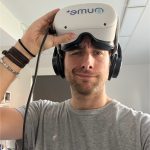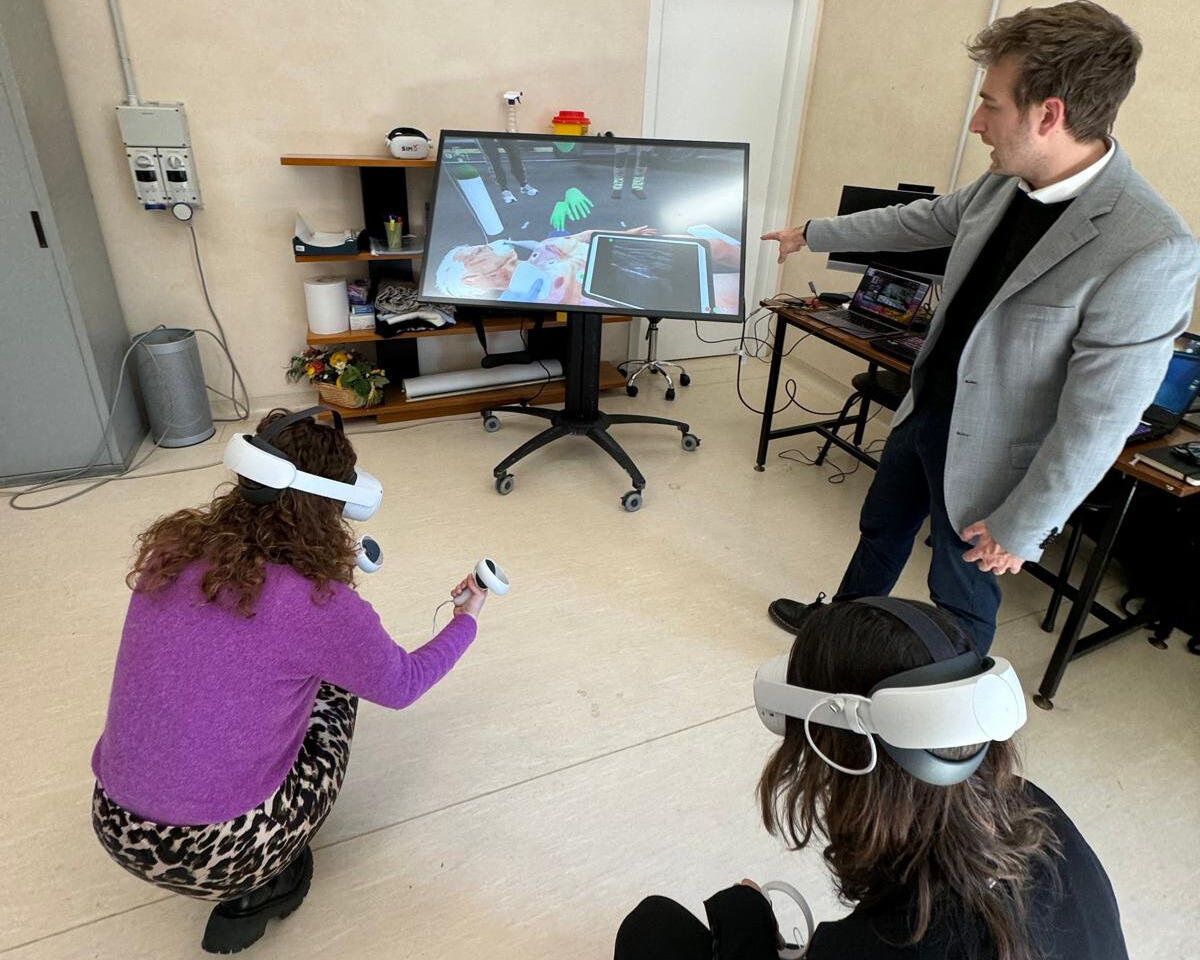SimX is a virtual reality software that offers immersive simulations for healthcare workers and military personnel. It allows multiplayer sessions, customizable scenarios, and remote training. Read the review by Gianluca Nepi (VR specialist) and Pierangelo Pinetti (simulation facilitator) to discover the pros and cons of this innovative tool.
The Software
SimX is a product that uses virtual reality to enable multiplayer immersive simulation sessions in a VR environment by going to complement and supplement simulation-based education. The software runs on virtual reality headsets to recreate scenarios where healthcare workers, paramedics, first responders and even military medical responders are required.
SimX allows users to fully immerse themselves in the operational context, using medical devices normally adopted in different hospital and first aid settings. The possibility of using virtual reality, enables healthcare workers to realistically experience the “human presence” of patients and colleagues, activating the emotional and relational components as well as acting in their specific roles, sharing tasks and procedures.
The exercise is run with a moderator app with educational tutoring functions (lecturer or expert). The tutor is able to supplement the various activities that users can perform with direct interventions in addition to continuous monitoring of the vital status of virtual patients.
The platform significantly reduces maintenance and equipment costs by requiring less time to set up, especially for all those complex scenarios to be conjured in the real environment, such as, for example, maxi emergency, impervious environment, or prehospital scenarios.

Multiplayer Training
SimX allows virtual scenarios to be simulated in multiplayer mode involving an unlimited number of users simultaneously. The ability to practice in teams triggers a learning mode that revolves around cooperative learning. Students practice with structured clinical cases with clear learning objectives helping each other by emphasizing the individual responsibility system.
Through remote connection, simulation sessions can be brought to life with users connected from multiple parts of the world, relocating training and overcoming geographical barriers.
The “Virtual Manikin” series
It is worth mentioning the advanced “Virtual Manikin” case creator series which SimX is developing . In the Virtual Manikin series, users can choose different adult and pediatric patient avatars and environments (such as hospitals or ambulances).The ‘Virtual Manikin’ series allows the creation of fully customisable presets that can act on a wide range of medical conditions, such as respiratory diseases, chest pains, skin reactions. Scenarios can be saved and reused, improving teaching efficiency through rapid repetition.
The SimX Marketplace

The SimX Marketplace is currently the largest available library of virtual reality simulated patient scenarios for medical education. The marketplace hosts more than 250 customized scenarios, covering a wide range of specialties and clinical situations, including emergency cases, internal medicine, pediatrics, and many others. The scenarios are created in collaboration with renowned institutions such as ELSEVIER, Air Methods, UPenn, NYU, and the US Department of Defense. Users interested in purchasing the software can search for scenarios based on learning objectives, medical specialty, or author, and build a custom case library that meets their specific learning needs. SimX also allows users to create custom scenarios in collaboration with their team, which can then be shared on the marketplace, also generating financial returns for authors.
Final verdict
SimX is a good tool for training team working and non-technical skills, much appreciated by those who wear headsets and immerse themselves in the simulation. Using the tool during training days is effective, as it can break up long theoretical sections. The scenarios offered are interesting and the diversification of cases allows for adaptation to different types of learners; the settings used by the system are very real. It becomes laborious and not fast in our opinion to turn on and prepare the devices. It requires updates each time at power-up and centering of the viewers after each scenario. The list of cases available in one’s library cannot be filtered by clinical specialty. It is often necessary for the instructor to activate the first-person view of the learner on the screen in order to guide the learner during the simulation. This visualization can be unengaging for the rest of the participants, because they lose the overall view of what is happening in the scenario.

- Good team and social skills training
- Good medical procedural skills training
- Complete immersion in the scenario for headset users
- Real and realistic use of devices
- Fun for those who use it

- Continuous software updates
- Need for adequate space for each scenario
- The cases that are purchased are not categorized by specialty, but in alphabetical order
- Case descriptions are sometimes not comprehensive, and the instructor needs to “try” the case in order to know it and use it effectively
- Poor involvement of observers (those not wearing headsets)
- To some people looking at a screen scenario causes discomfort
- English language only













































